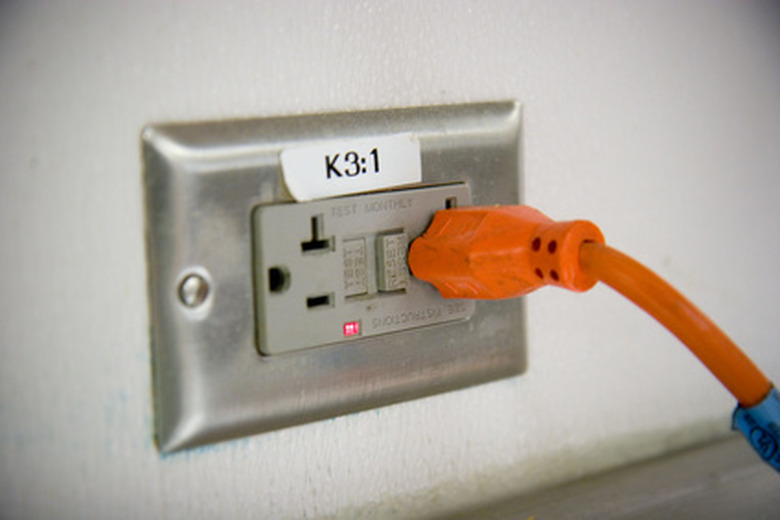Canadian Requirements For GFCI Installation
A GFCI outlet (ground fault circuit interrupter) is an important safety feature that's installed in all Canadian homes and businesses. When constructing a building, the electrical code requirements won't be met if the structure doesn't have this type of outlet at certain receptacle locations. In homes and buildings that are 20 years or older, GFCI outlets aren't a strict requirement.
Locations
For a building (either residential or commercial) to meet all electrical code requirements, Class A GFCI outlets must be installed on all receptacles within 1.5 meters of a sink, tub or shower stall. When deciding where GFCI outlets are required, a "sink" refers to any kind of sink in any room (utility, laundry, bar) that's attached to a plumbing drainpipe. While not strictly required, the electrical code recommends that GFCI outlets be installed on receptacles that are near either concrete or metal surfaces that may be exposed to water. This would include any receptacles that are in a basement, garage, outside or that are near a swimming pool or hot tub.
Set Up
Not all of the receptacles in kitchens, bathrooms or other required locations need to have a GFCI outlet. Because of the way that the outlets function, only the first receptacle in the line—the one closest to a source of water—must have a circuit interrupter. The way that a GFCI outlet functions is that every receptacle "downstream" (from that outlet to the end of the line) of the outlet that's tripped will shut off as well until the problem has been fixed. All of the receptacles "upstream" (from the outlet to the fuse box) are unaffected when an outlet is tripped.
Construction Sites
Construction and demolition sites are other places where Class A GFCI outlets are required on both temporary and permanent receptacles. Once receptacles have been installed in the building and have met electrical code standards the construction company is free to use those receptacles for basic use regardless of whether or not they have GFCI outlets. For safety reasons, GFCI outlets are required if the receptacle is being used to give power to construction tools or equipment. The same rules apply if power is being supplied from receptacles in an adjacent building. When using a generator on a construction or demolition site, the generator itself must be plugged into a GFCI outlet and any construction tools that are powered using that generator must somehow be connected to a GFCI outlet. If the generator itself doesn't have the necessary outlet then a GFCI cord device must be used instead.
